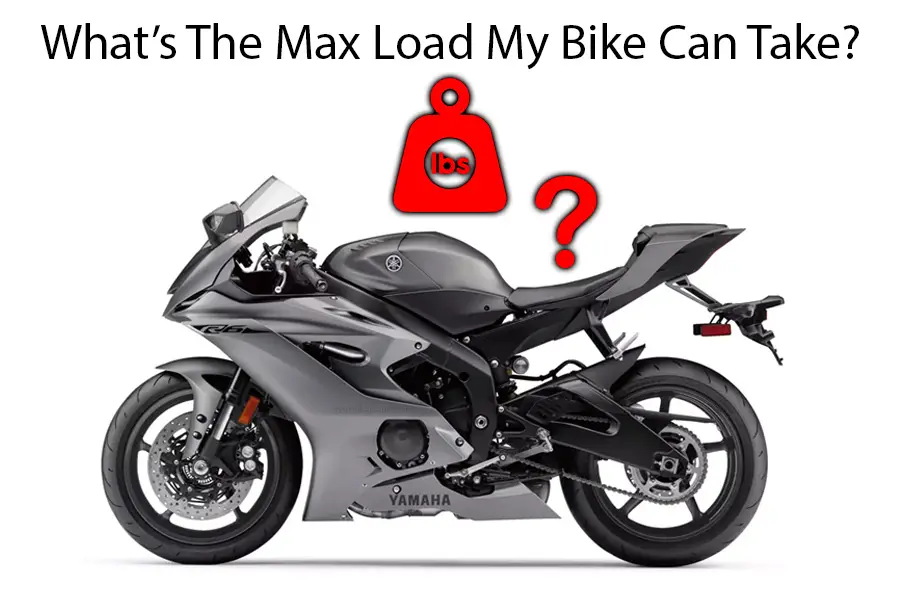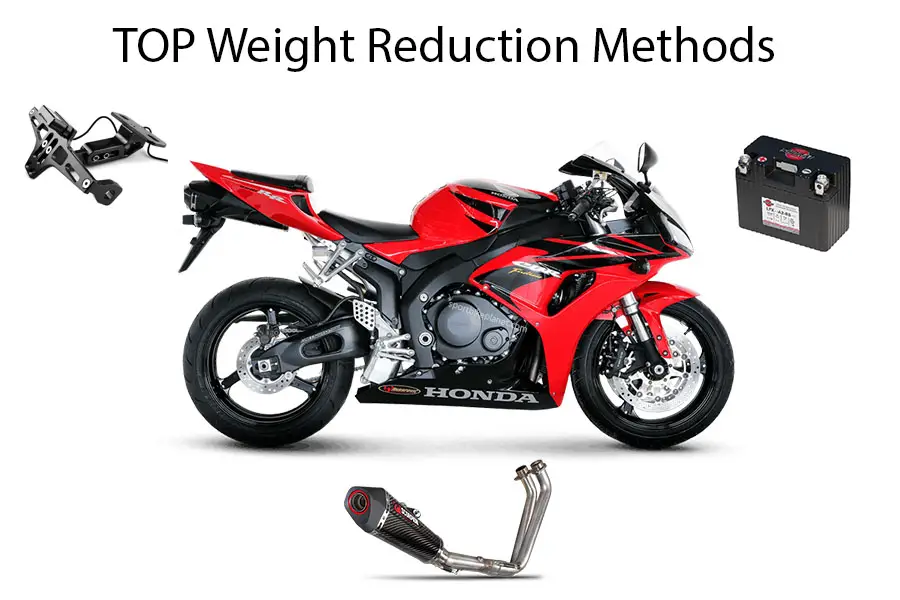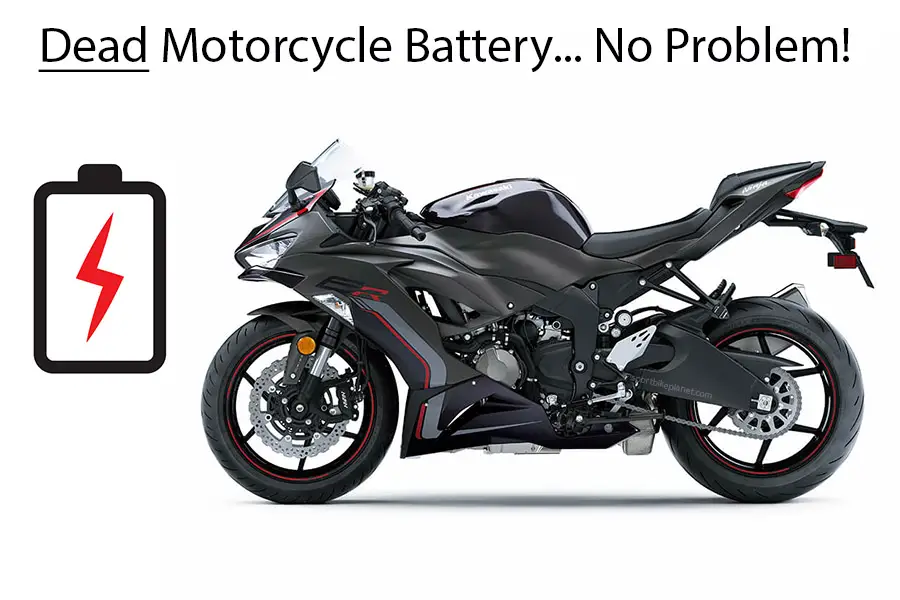I’m not the smallest guy in the world, and so I need to know what maximum weight my sportsbike motorcycle will carry especially if taking a passenger, and here’s exactly how I figure it out…
Motorcycle Rider Weight Limit Calculation
To calculate the maximum weight you can be (maximum load) and still ride your motorcycle safely you must find the vehicle gross vehicle weight (GVW) and subtract the curb (or wet) weight. The figure you’re left with is the maximum safe weight of the rider plus any passenger and cargo carried.
Max Motorcycle Rider Weight = Gross Vehicle Weight (GVW) – Curb Weight
However you might also find that the manufacturer of your motorcycle does this entire calculation for you and publishes the maximum load in your bike’s manual, as you can see in the example below from the manual that came with my Kawasaki Ninja 650.
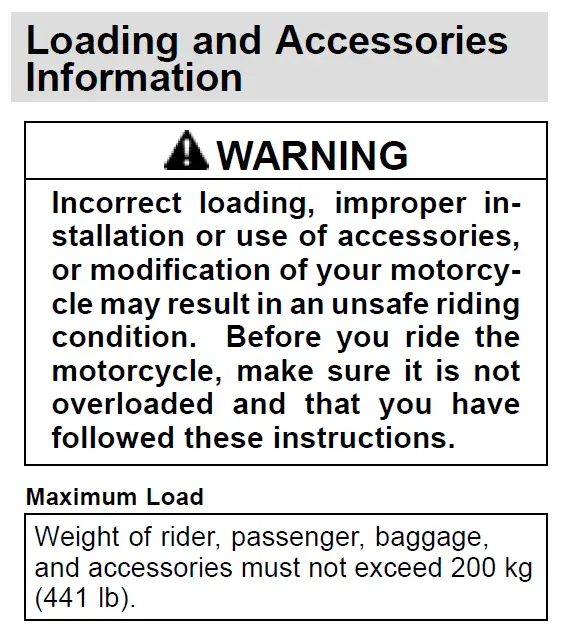
Before we go any further let’s get some definitions nailed down…
What Is Motorcycle Maximum Load?
Motorcycle maximum load is the total weight the bike can carry including the rider, passenger and any cargo. It is often published in a motorcycles’ manual, and if exceeded will make your bike unsafe to ride.
But, let’s say that you don’t have the maximum load listed in your motorcycle’s manual, in that case let’s look in detail at what the GVW and curb weight is exactly and then how to find these figures and calculate the max rider weight for your bike.
What Is Motorcycle Gross Vehicle Weight (GVW)
The Gross Vehicle Weight (GVW) of your motorcycle is the weight of the motorcycle itself plus all engine fluids and full fuel, plus the maximum allowable weight of the rider and passenger. Any cargo equipment and items loaded as cargo would also be included in the GVW. Gross Vehicle Weight is essentially the heaviest the motorcycle can be with everything on it before it becomes unsafe to ride, as specified by the manufacturer.
What Is Motorcycle Curb Weight
Motorcycle curb weight, or wet weight, is the weight of the motorcycle itself plus all engine oils and full fuel. Curb weight is essentially the total weight of the bike when it’s completely ready to ride away, but without any rider, passenger or cargo equipment on board.
Ok so where do we find a motorcycles’ GVW and curb weight specs…?
The curb weights, sometimes listed as “curb mass”, of all popular current sportsbike motorcycles is found in your motorcycle manual.
But… the gross vehicle weight is a little harder to pin down…
Where To Find Your Motorcycle Gross Vehicle Weight Information
The gross vehicle weight (GVW) of your motorcycle should be printed or stamped into the Vehicle Identification Number (VIN) plate if your bike has one.
It may also be in your bike’s manual, but either way your manual will give you either the gross vehicle weight or maximum load so you’ll be covered one way or the other and will be able to figure out the maximum load your sportsbike can carry.
What Happens If You Exceed Motorcycle Weight Limit
If a motorcycle is consistently overloaded it can lead to such things as failures, and loss of performance and handling:
- Loss of Handling: your motorcycle is tested by the manufacturer as having certain handling characteristics to ensure the highest level of performance and safety possible, and if the bike is overloaded those performance characteristics will break down and you cannot always count on the bike to do what you expect it to do;
- Bike Failure: part of your motorcycle, for example, the suspension, may fail;
- Tire Failure: tires have weight limits that are not always the same as your motorcycle, and if they’re overloaded they can fail during normal riding conditions;
Motorcycle Tire Weight Limits
Motorcycle tires are given weight limits, called tire load capacity, because if they are overloaded they can incur internal damage and fail entirely during riding, provide poor or unsafe handling, and not take the load of the bike properly which puts additional strain on the suspension.
Where Do I Find My Motorcycle Tire Load Capacity
You can find your motorcycle tire load capacity in three places:
- In your bike’s manual (see first pic below);
- On a placard sticker on your bike itself (see second pic below);
- On the sidewall of your bike tire.
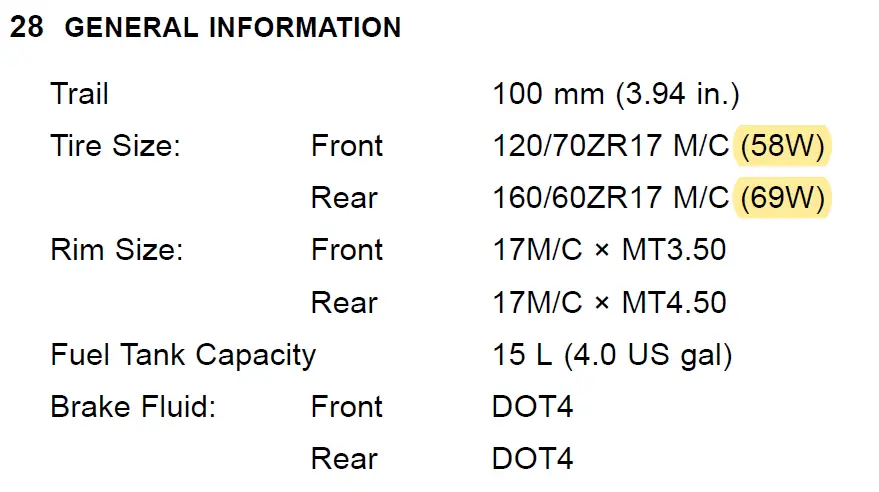
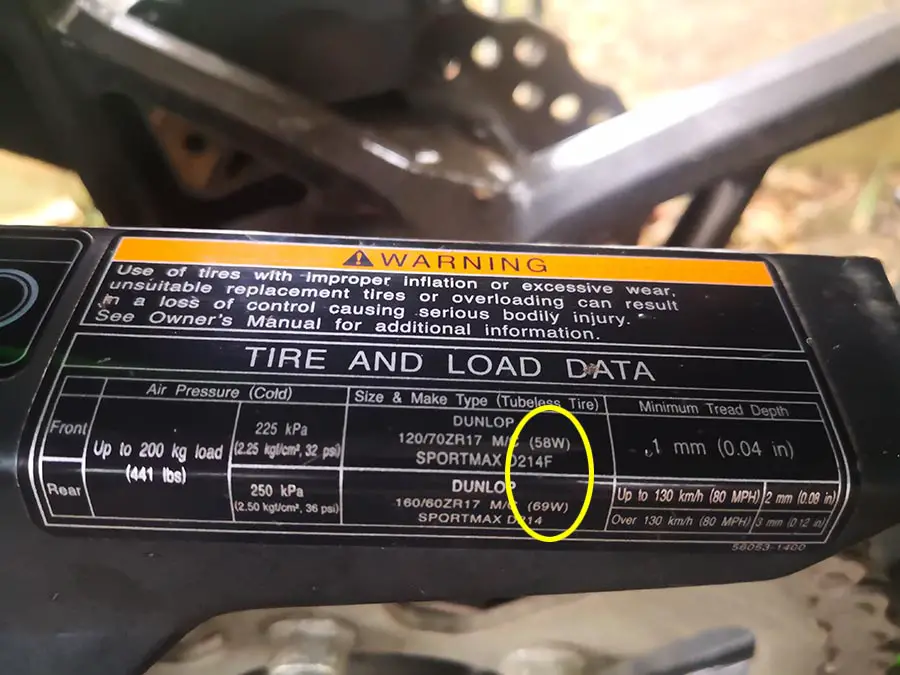
IMPORTANT: if you change from the factory fitted tires to different tires, ensure that the load capacity of the new tires is not below the load capacity mentioned in your motorcycle’s manual. Doing so will give a much greater likelihood of your tire failing during riding!
What Do Tire Load Capacity Number Mean
Load capacity numbers, for example “69W”, specifies the maximum weight your tire can support.
If we use the example of 69W and check the tire load capacity table below, you’ll see that this specific tire can handle a maximum load of 325kg or 716lbs.
Motorcycle Tire Load Capacity Table
Can I Use A Higher Load Capacity Tire To Carry More Weight On My Motorcycle?
You should never carry more than the manufacturer specified load even when using tires with a greater load capacity than required.
The manufacturer has specified a max load for more reasons than just tire load capacity, and the stated max load must be followed for safety reasons.

